

How to build a one-pager that wins investor outreach
A one-pager is a summary document that presents your startup to potential investors. It is often the first step of communication in the fundraising process and serves as a brief summary of your pitch deck.
In this article, we will discuss the difference between a one-pager and a pitch deck, the purposes a one-pager serves, and how to structure it to achieve better results from your outreach.
The main difference between a one-pager and a pitch deck is that a one-pager is designed to capture the investor’s attention and generate interest in your project., while a pitch deck is a more detailed presentation of your startup. A one-pager is typically used when applying for an acceleration program or reaching out to potential venture capitalists or investors. It serves as a starting point for the interested party to contact the founder and get a more detailed dive into the project, leading to the next steps of interaction.
Creating a One Pager for your startup requires careful consideration of your goals and the needs of your audience. If you’re sending the document to a potential investor who has already expressed specific areas of interest, it’s wise to tailor the One Pager to address those points. However, if you’re creating an agile document that can be used as a quick overview when cold messaging or in situations where you need to provide a summary of your startup without losing the momentum, there is a tried and tested framework that you can follow. In three years of working closely with startups, we have identified the best framework for the initial part of your communication with investors. We will now guide you on how to use it in eight simple steps:
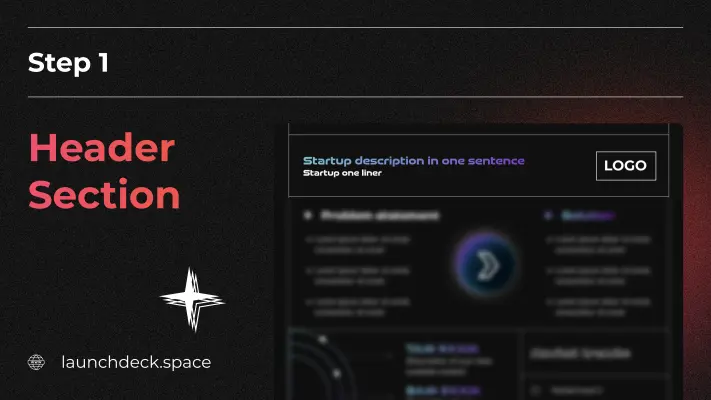

Step 1: Header Section.
This should feature your company or startup’s logo and a brief description of what your startup does and why it matters along with a compelling one-liner that points to your key vision.
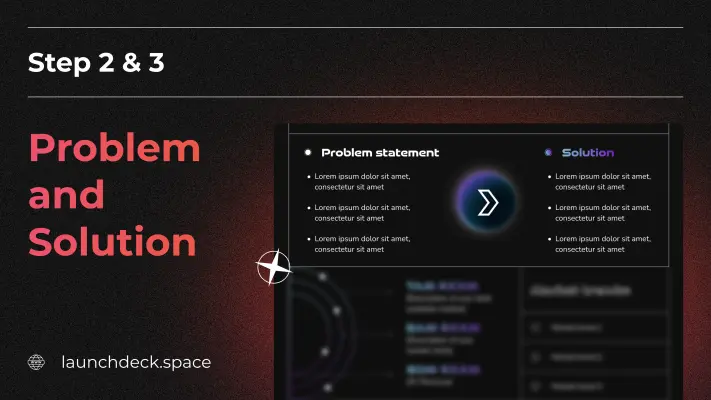

Steps 2 & 3: Problem and Solution.
In this section, you should describe the problem that your startup solves. This problem should be clear to anyone, and you should explain in one or two sentences why the market is outdated or what are the pain points in the given market. You should also include reliable sources of information that back up your points. You can combine the problem and solution in one section, showing the comparison between the current approach and how you can innovate it or do it better.
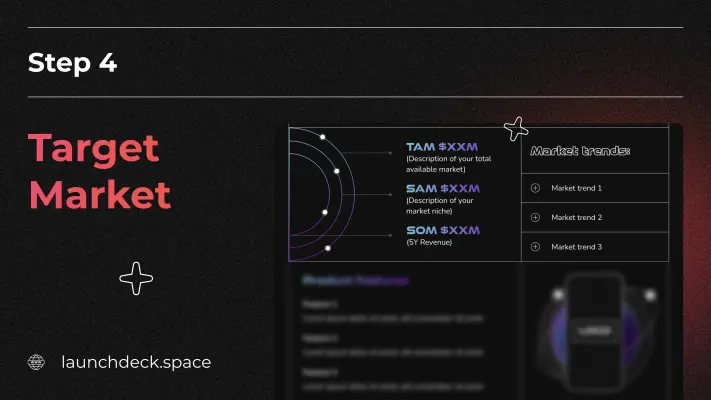

Step 4: Target Market.
Using the SOM SAM TAM framework, you can show the market you will operate in. Your target market should be large enough to be attractive to an investor, but at the same time, it should be clear how it is related to your solution. It’s important to be mindful when presenting your Total Addressable Market (TAM) to investors, as presenting a market that’s too large in relation to your solution can be overwhelming and may not effectively communicate the scope of your company’s potential. In addition to the static market size, you should also show dynamic market trends, the growth of this market, its potential, and a big opportunity for an investment. This could be done by stating two or three core market trends and drivers.
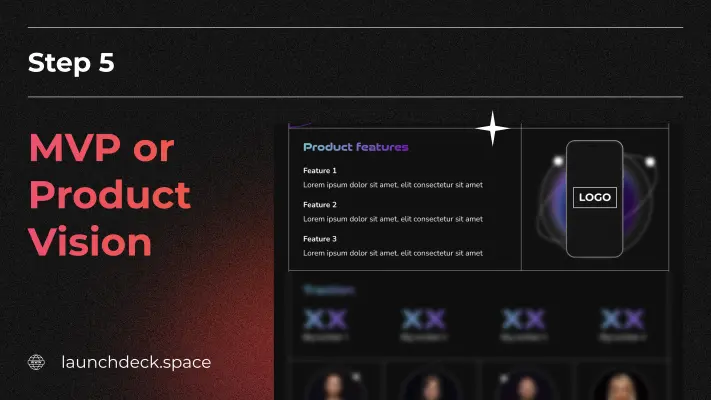

Step 5: MVP or Product Vision.
Present your product in a simple way without showing any technical details. Instead, show the super features of your product and explain why it is a game-changer and is 10 times better than competitors.
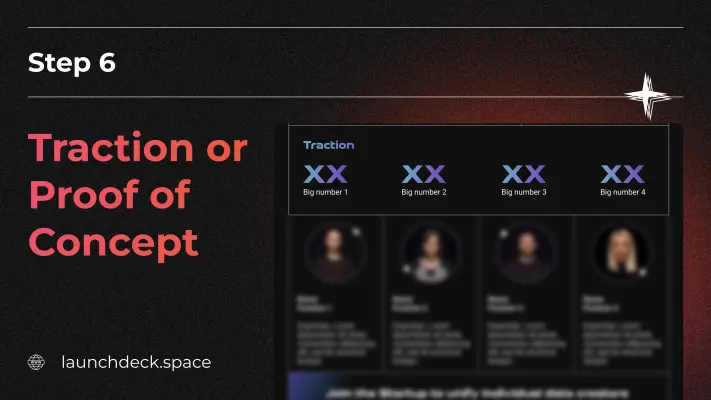

Step 6: Traction or Proof of Concept.
This should include three to five quantifiable results of your project, such as signups, user base, funding, partnerships, or media coverage. This should be enough to form a trust bond between you and your potential investor and show your product-market fit.
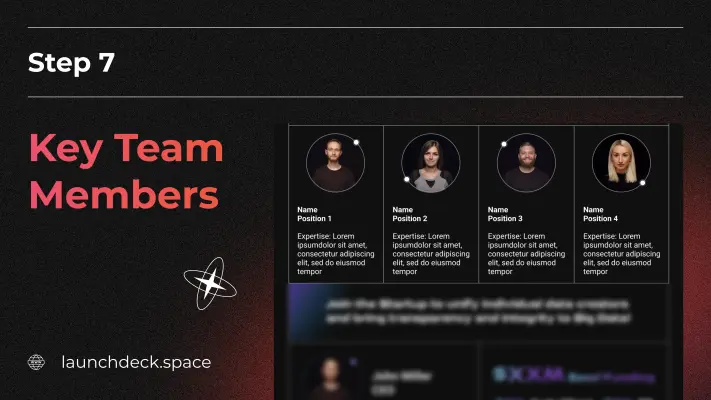

Step 7: Key Team Members.
Introduce the key people on your team and explain why you and your team are perfect to solve the problem and make the idea work. Emphasize your expertise in the field and why your team is good enough to make this project happen. This is what investors are looking for, especially in the early stages.
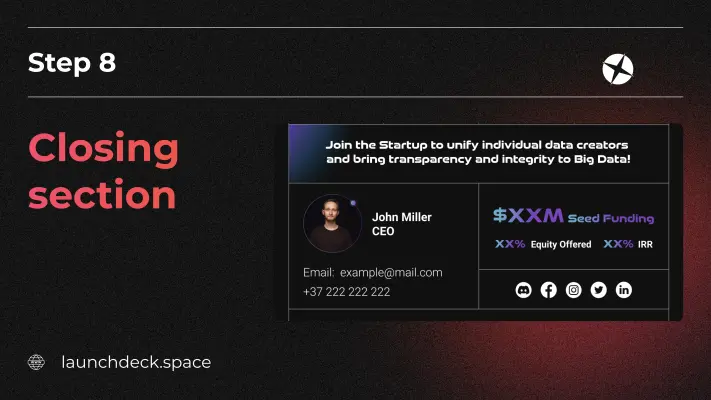

Step 8: Closing section:
Finally, to successfully finish up your one-pager, there are three key points to consider: the call to action, the ask, and your contact details. By including these elements in your one-pager, you can increase the chances of attracting potential investors and partners for your project.
- Call to action: This is a catchy phrase or sentence that motivates investors to get involved with your project. It should be attention-grabbing and compelling, making it clear why your project is worth investing in. This is your opportunity to make a great first impression and entice investors to learn more about your startup.
- The ask: In this section, you should clearly state what you are seeking from potential investors. This could include seed funding, partnerships, or other forms of support. Be specific and include any relevant details such as the amount of funding you are seeking and the terms of the investment. This helps investors to understand what they will get in return for their investment.
- Contact details: Make it easy for investors to get in touch with you by including your contact information. This should include your email, phone number, and any relevant social media links or website. This way, if investors are interested in learning more about your project, they can easily reach out to you to discuss further.
A one-pager is an excellent tool to communicate your startup’s value, the solution you offer, and your target market, but also to allow investors to reach out to you for further discussion. With a clear and concise one-pager that highlights these key steps and points, your startup will have a better chance of standing out and attracting the right investors.
If you would like to gain a deeper understanding of how to improve your investor outreach, we invite you to watch our video explainer and download our One Pager Guide.




